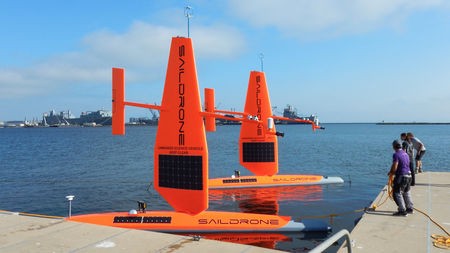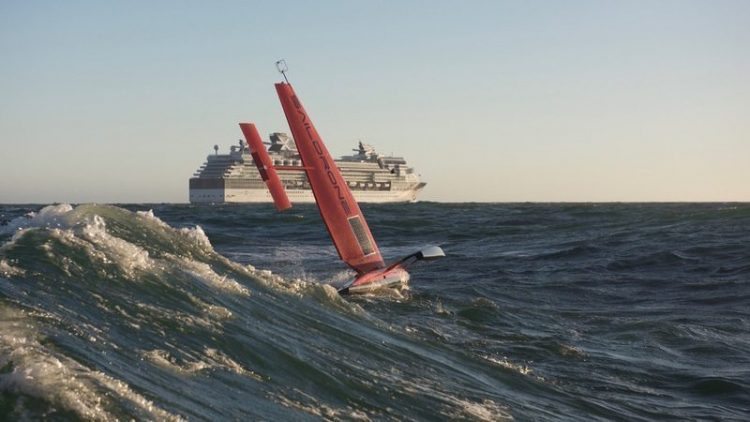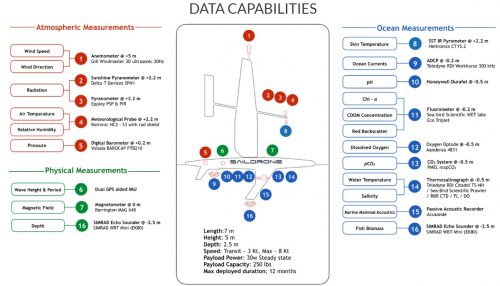Saildrone Obtains $60M in Series B Funding

What are Saildrones?
Congratulations to Saildrone which have just raised $60 million in series B funding (May 2018) to continue development and deployment of their autonomous sailing robot. Saildrone launched commercially in 2016 and its current mission is to build and deploy a fleet of 1,000 fully autonomous ocean-capable vessels. They hope to have 200 drones completed by the end of this year. So what exactly are Saildrones?
Although seaworthy autonomous vessels are certainly not new, designs which have successfully crossed oceans and are made to be mass produced are rare. The technology used in its propulsion involves the patented hard wing / sail technology means it does not have a standard propeller and relies on the wind, as has been done for centuries. The use of this wing allows it to cross vast distances with no onboard stored energy, aside from what is needed to reliably power the electronics. In 2014, they set out to sail around the world without human intervention.
What are Saildrones capable of?
Each 23 foot long drone is equipped with a wide array of sensors, making it incredibly versatile in terms of potential applications. The team foresees these drones being used to monitor both weather and ocean conditions (environmental monitoring) and fish (and shark migration soon enough) all in real time. Missions can last up to 12 months and so far have not required human intervention. The company is also offering the drones for "rental": for $2,500 a day a drone can be re-tasked based on customer needs. One or more drones which may already have been deployed can be redirected, which greatly reduces the time needed to obtain data. Should a drone not be close by to the target area, one can always be deployed.
What can Saildrones do?
So what can't these drones do? Aside from putting themselves into the water, they can pretty much do everything autonomously. The drones have needed a bit of human help in certain situations like being towed out to deeper water for easier deployment, or where the wind is stronger. Humans can also not only obtain sensor data in real time from the drone but also images. Currently, fixed buoys are used for a variety of reasons worldwide from monitoring weather and sea conditions to detecting possible tsunamis. A secondary objective is to use the drones as replacements to manned research vessels, which not only require scientists and sailors, but also food and provisions. This has the effect of greatly reducing the cost of obtaining relevant data, as well as reducing the risk of injury to humans in potentially dangerous situations.
Sources
Thanks for helping to keep our community civil!
This post is an advertisement, or vandalism. It is not useful or relevant to the current topic.
You flagged this as spam. Undo flag.Flag Post




